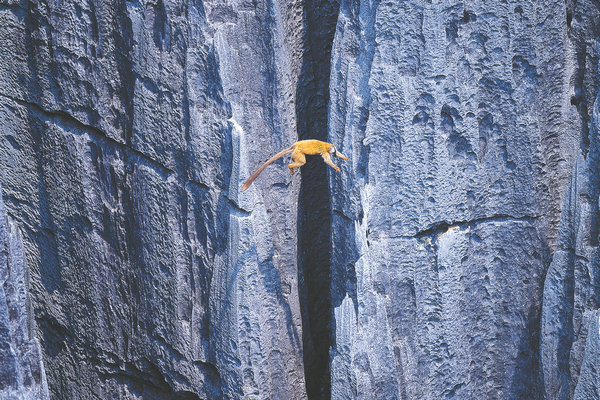

With her MBA background, Zhou says it's key to pick up a wealth of knowledge about animals before getting into the field. "Before photographing a jaguar, I would first research its characteristics — its habitat, behavioral traits, and how old it gets before reaching maturity," she says.
For a female photographer, it's important to physically and mentally prepare for carrying heavy equipment and traversing rough conditions.
"Nature photographers often use extremely long lenses, which are very heavy, and hiking in the wilderness with such gear requires a lot of physical strength. Especially when a tripod isn't an option and you have to support the lens with your shoulder," Zhou says.
Endurance is also key — being able to handle hunger, dirt and sometimes thirst, as certain places don't allow for easy access to clean water.
"Every trip to answer the call of nature can be dangerous, as it puts you at risk of encountering wildlife," she explains.
As her skills developed, Zhou honed her style and principles. For instance, the scene being captured must be authentic and must be photographed in the animal's natural state.
"It is essential not to use bait, set up scenes, or disturb their natural life rhythms — such as forcing a bird to fly or deliberately pruning a bird's nest to make it photogenic," she says. "If there is a conflict between capturing a shot and jeopardizing the animal's existence and safety, one must decisively abandon the shot."
The years Zhou has spent capturing nature and wildlife have not just given rise to tens of thousands of valuable images but endeared her to the animals, prompting her to call attention to their protection.
In 2019, she worked with ornithologist Lin Qingxian from Xiamen University based in East China's Fujian province to set up Seeking Wild, a nonprofit organization committed to raising public awareness of wildlife conservation through field research, rescue efforts, and ecological photography. Additionally, Zhou held a personal photography exhibition, with all proceeds going to natural conservation endeavors.
To date, her NGO has about 160,000 followers on the social media platform Sina Weibo.
"The images captured by a photographer are more a source of materials for wildlife conservation, as what the eye sees is the most direct and visually impactful," Zhou explains of the establishment of Seeking Wild. "However, when it comes to follow-up actions, I believe it requires the involvement of organizations that can implement practical measures."
She knows it's unrealistic to expect immediate major changes through this small cause.
"We are small in the grand scheme of the universe. On the path of caring for the environment and protecting animals, taking a step forward, even if it's just one, is far more meaningful than remaining stagnant," Zhou says.